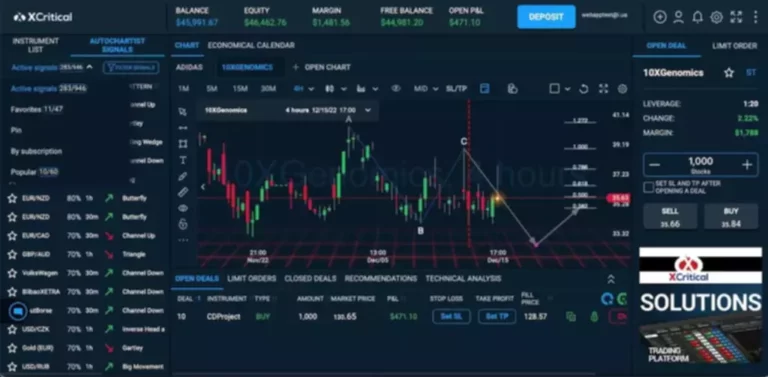Yield farming and liquidity mining, on the other hand, generally function on more area of interest or less frequently used platforms. The understanding of staking vs. yield farming vs. liquidity mining could be full with an impression of their risks. Just like the opposite two approaches, liquidity mining also presents some notable risks such as impermanent loss, smart contract dangers, and project risks. In addition, liquidity miners are also susceptible to the rug pull impact of their tasks. The most notable factor which comes up in discussions about DeFi buying and selling would refer to the staking vs. yield farming vs. liquidity mining differences. All three of them are well-liked solutions in the domain of DeFi for acquiring plausible returns on crypto assets.

Learn more about how yield farming and staking supply opportunities to earn passive income in decentralized finance (DeFi). In basic, liquidity mining is a derivative of yield farming, which is a derivative of staking. All the solutions are simply methods for placing idle crypto-assets to use.
Monetary Goals
A decentralized trading pair and the staking pool usually are not comparable, though. Conversely, it’s more akin to a decentralized vault for a sure class of asset. DeFi’s growth has been significantly fueled by yield farming, which enables users to optimize their cryptocurrency holdings and facilitates the smooth operation of platforms and protocols. Yield farming has varied risks even when it seems to be a risk-free investing approach. Gaining information about yield farming can help you optimize your cryptocurrency holdings, one thing that many owners are unaware of.

Liquidity pools are principally the good contracts that drive the DeFi ecosystem. The pools include digital property which may help users in buying, promoting, borrowing, lending, and swapping tokens. On the other hand, liquidity suppliers are the users or buyers who’ve locked their belongings in the liquidity pool.
Liquidity
MoonPay’s widget provides a fast and simple method to buy Bitcoin, Ethereum, and greater than 50 other cryptocurrencies. Lastly, not like yield farming, staking is best protected from hacks and scams. To improve our community’s learning, we conduct frequent webinars, coaching sessions, seminars, and events and provide certification packages. Sign up under to get entry to our Blockchain Believers portfolio, with our top-rated crypto choose. Since 2018, we’ve crushed the market with a smart mixture of crypto and customary stocks. For those that need help determining the place to begin, you probably can all the time stake a small quantity to grasp how it works, and develop from there.
There are also bugs or errors in good contracts that may result in a smart contract threat, making the protocol vulnerable to hacking. Yield farming and staking differ in the variety of tokens customers want for his or her investments. Since staking requires locking up person belongings with no alternative to switch pools, stakers don’t need to pay fuel charges.
They then think about staking the tokens issued by the liquidity suppliers. Making essentially the most of your cryptocurrency holdings with out letting them lie around is feasible with yield generation or farming. Your cryptocurrency holdings would no longer be kept in your pockets best yield farming platform or an trade due to this idea. Conversely, yield farming rates may be compelling enough to borrow your cryptocurrency holdings by way of DeFi protocols in exchange for generating beneficial returns.
This approach made Lido the biggest DeFi protocol by complete value locked (TVL), accounting for over 25% of the DeFi sector. By depositing a network’s native cryptocurrency in a specific pockets for a predetermined period, holders turn out to be eligible for rewards in the type of native tokens. Both Yield Farming and Liquidity Mining are powered by good contracts, which automate the distribution of rewards and enforce the principles of the liquidity swimming pools. These swimming pools are primarily sensible contracts that hold funds and allow users to commerce or spend money on a decentralized method.
Featured Posts
There are many different methods to earn passive crypto earnings, but yield farming and staking prime the list. These two strategies have worked properly to offer a gradual earnings without the high dangers that include trading cryptocurrencies. Stick round to find out https://www.xcritical.com/ how these ideas work and how you can embody them in your passive earnings methods. The reward proportion is based on their share of the entire pool liquidity. These newly minted tokens give liquidity miners entry to the project’s governance and can be exchanged for better rewards or different cryptocurrencies.
No matter the market circumstances, you can’t unstake crypto until the unbonding interval ends. As cryptocurrency continues to realize popularity, yield farming has emerged as a promising investment alternative within the decentralized finance (DeFi) area. Yield Farming is a more modern idea than staking, but sharing lots of similarities. While yield farming provides liquidity to a DeFi protocol in trade for yield, staking can check with actions like locking up 32 ETH to turn out to be a validator node on the Ethereum 2.zero community.

In the continuously rising blockchain know-how and crypto trade, growth has been led by the Decentralized Finance (DeFi) idea. Any individual with entry to the web and a supported crypto wallet could work together with DeFi functions. High network congestion can result in delays or failures in staking transactions, impacting rewards and probably leading to missed opportunities.
Impermanent Loss
Staking is more viable as a way of reaching consensus when compared to mining. Stakers needn’t spend money on costly gear to generate enough computational energy required for mining. Also, there are staking-as-a-service platforms that ease the method of staking. Making one of the best funding in a rising and ever-changing market like cryptocurrency may be challenging.
State officials have already filed suspension and stop transactions against centralized cryptocurrency lending platforms like BlockFi, Celsius, and others. If the SEC classifies DeFi loans and borrowing as securities, the ecosystems of lending and borrowing might drop significantly. Smart contracts management the actions in the liquidity pool, in which each asset change is enabled by the smart contract, resulting in a value change. When the transaction is accomplished, the transaction cost is proportionately cut up between all LPs. The liquidity suppliers are rewarded accordingly based on how much they contribute to the liquidity pool. A liquidity provider establishes the pool’s opening price and percentage, using the market to calculate an equivalent supply of each merchandise.
To mitigate this risk, it’s essential to decide on a good blockchain network that has a robust safety system in place. To calculate yield, builders and investors take a look at the Annual Percentage Yield (APY) which considers compounding curiosity. However, it is important to focus on the risks corresponding to impermanent loss, good contract bugs, and regulatory adjustments. Even though yield farming and staking have different advantages for investing, they can both be modified to fit a short-term or long-term plan.

Decentralized liquidity is important for DeFi companies as a outcome of all the principles are enforced by sensible contracts and algorithms alone. If you wish to spend money on yield farming, you have to put your crypto assets in a liquidity pool to help them stay liquid. The assets are lent out to investors looking for funds for speculation or other purposes. The money created from the loans is distributed among yield farmers based on the invested amount. Smart contracts, that are laptop codes that automate blockchain features, deal with the majority of these tasks. Holding crypto assets isn’t the only approach to earn cash within the crypto world.
Understanding Staking
In conclusion, each staking and yield farming supply distinct advantages and drawbacks. When deciding which avenue to pursue for funding, it is essential to assess your investment capital and preferences regarding technique particulars. The determination finally is dependent upon particular person funding objectives, with elements corresponding to danger tolerance, funding horizon, and capital allocation enjoying key roles in the choice process. In essence, there’s no one-size-fits-all answer, as each investor’s unique circumstances and objectives shape their most popular method to investment. Staking, however, provides extra steady returns however usually requires locking up tokens for a predetermined interval.
The market may be highly volatile, and the protocols used might have vulnerabilities, leading to potential losses. Finally, staking can provide larger returns in comparison with other funding methods. In Tezos, customers can delegate their staked coins to a delegate who will validate transactions on their behalf. Delegates are elected by the group, and those with the most staked coins have a better chance of being elected. Users who delegate their cash to a delegate will earn rewards based mostly on the delegate’s performance. First, let’s contemplate the cryptocurrency Cardano (ADA), which uses a PoS consensus mechanism.

